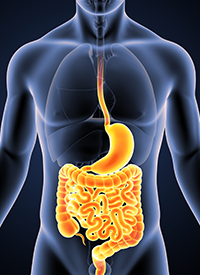News
Article
Data for Second-Line or Later Ramucirumab Show Consistent Benefit in Advanced HCC
Author(s):
Treatment with ramucirumab in the second line after first-line lenvatinib monotherapy or the combination of atezolizumab and bevacizumab, or as third-line treatment following both regimens, elicited efficacy comparable with second-line ramucirumab following treatment with sorafenib in patients with advanced hepatocellular carcinoma.
Ramucirumab Shows Benefit in Advanced HCC

Treatment with ramucirumab (Cyramza) in the second line after first-line lenvatinib (Lenvima) monotherapy or the combination of atezolizumab (Tecentriq) and bevacizumab (Avastin), or as third-line treatment following both regimens, elicited efficacy comparable with second-line ramucirumab following treatment with sorafenib (Nexavar) in patients with advanced hepatocellular carcinoma (HCC), according to data from the R-EVOLUTION trial (jRCTs031190236) presented at the 2023 International Liver Cancer Association Conference.1
Data from the Japanese trial demonstrated that patients treated with ramucirumab (n = 17) experienced a median overall survival (OS) of 12.0 months, a median progression-free survival (PFS) of 3.7 months, and a 6-month PFS rate of 14.3%. Regarding Child-Pugh score, 35.3% of patients had progression of their score, 58.8% of patients had a stable score, and 5.9% of patients had an improvement in their score.
The prospective phase 3 REACH-2 trial (NCT02435433) previously evaluated the efficacy and safety of ramucirumab compared with placebo in patients with HCC who experienced progression on or intolerance to frontline sorafenib. Notably, data from REACH-2 supported the 2019 FDA approval of ramucirumab monotherapy in patients with HCCwho have an alpha fetoprotein of at least 400 ng/mL and have been previously treated with sorafenib.2
Because ramucirumab is approved as a second-line treatment for this patient population, it now frequently follows treatment with lenvatinib or the combination of atezolizumab and bevacizumab—two common first-line treatments for patients with advanced HCC.1 Despite the prior findings for ramucirumab, gaps in evidence remain for the safety and efficacy of the agent in the real-world population under current treatment patterns.
“The purpose of [the R-EVOLUTION] study is to complement the results of the REACH-2 study by prospectively evaluating the safety and efficacy of ramucirumab in the current setting of systemic therapy for advanced HCC,” lead study author Kazufumi Kobayashi, MD, of the Department of Gastroenterology at the Graduate School of Medicine of Chiba University in Japan. explained in a poster presentation of the data.
The open-label, non-randomized, multicenter, prospective trial conducted at 13 institutions in Japan included patients with advanced HCC who had a Child-Pugh score of A. Patients received ramucirumab as a second-line treatment if they were previously treated with lenvatinib or the combination of atezolizumab and bevacizumab, or as third-line treatment if they received atezolizumab plus bevacizumab in the first line and lenvatinib monotherapy in the second line.
The median age of patients was 73 years (range, 42-89). The majority of patients were male (82.4%). Moreover, 47.1% of patients were hepatitis B positive, and 23.5% were hepatitis C positive. Additionally, 29.4% of patients reported alcohol abuse. Notably, 35.3% of patients had Child-Pugh score of 5, and 64.7% had a score of 6.
A majority of patients had a ECOG performance status of 0 (88.2%) and a maximum intrahepatic tumor size of at least 50 mm (52.9%). Eight or more tumors were reported in 23.5% of patients, 47.1% of patients had macrovascular invasion of their disease, 52.9% had extrahepatic metastasis, and 82.4% of patients had Barcelona Clínic Liver Cancer stage C disease. Finally, 41.2% of patients were previously treated with lenvatinib monotherapy, 41.2% were previously treated with atezolizumab plus bevacizumab, and 17.6% of patients received first-line atezolizumab plus bevacizumab followed by second-line lenvatinib.
Regarding subsequent therapy, 47.1% of patients went on to receive a TKI, 23.4% received best supportive care, 11.8% received an immune checkpoint inhibitor, 11.8% had hepatic arterial infusion chemotherapy, and 5.9% received radiation.
Regarding safety, 35.3% of patients discontinued ramucirumab due to adverse effects (AEs). The most common AEs included hypertension, decreased appetite, fatigue, hypoalbuminemia, proteinuria, edema limbs, constipation, decreased platelets, neutropenia, diarrhea, and weight loss.
“Although the incidence of AEs were higher than in the REACH-2 trial, ramucirumab could demonstrate sufficient safety when managed appropriately and play a significant role in sequential therapy,” study authors concluded.
References
- Kobayashi K, Ogasawara S, Koroki K, et al. Single arm study to evaluate the safety and efficacy of ramucirumab in advanced hepatocellular carcinoma patients in Japanese real-world practice; focusing on the complement of the REACH-2 study: R-EVOLUTION trial. Presented at: 2023 International Liver Cancer Association Conference; September 7-9, 2023; Amsterdam, Netherlands. Abstract P-108.
- FDA approves ramucirumab for hepatocellular carcinoma. News release. FDA. May 10, 2019. Accessed September 8, 2023. https://www.fda.gov/drugs/resources-information-approved-drugs/fda-approves-ramucirumab-hepatocellular-carcinoma


















%20(2)%201-Recovered-Recovered-Recovered-Recovered-Recovered-Recovered-Recovered-Recovered-Recovered-Recovered-Recovered-Recovered-Recovered-Recovered-Recovered-Recovered-Recovered.jpg?fit=crop&auto=format)
%20(2)%201-Recovered-Recovered-Recovered-Recovered-Recovered-Recovered-Recovered-Recovered-Recovered-Recovered-Recovered-Recovered-Recovered-Recovered-Recovered-Recovered-Recovered.jpg?fit=crop&auto=format)
